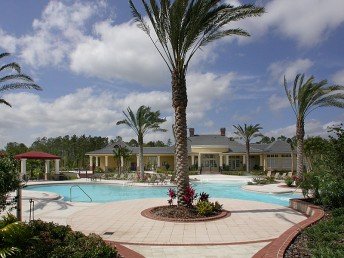Four years ago today Steve Jobs took the stage at an Apple press conference at San Francisco’s Yerba Buena Center for the Arts to introduce to the world the very first iPad.
It’s amazing to think that not too long ago we had to be tethered to a dial-up connection to access the internet. Fast forward to today and we’re using the web to do just about everything from staying connected to long distance relatives, shopping online retailers, and even completing education programs on devices that fit in the palm of our hands from virtually anywhere in the world.
But computing is not the only industry to benefit from advances in technology over the last few years.
To the untrained eye, today’s homes may appear very similar to those built just a decade ago, but a closer look will show that current new homes are much more advanced than they used to be.
Here are just a few ways homebuilding has evolved over the last few years…
Energy Efficiency
Take higher efficiency heating and cooling systems for instance. If you purchased a new home a decade ago then you may have a system that ranges from 6 SEER to 10 SEER. (SEER stands for Seasonal Energy Efficiency Ratio, and is the method used to describe the efficiency of a particular equipment system.)
The higher the rating, the lower the operating costs. Ten years ago, 10 SEER was considered “high efficiency”. Today, each home we build includes a 15 SEER system at a minimum. With all of today’s focus on conservation and energy savings, you should always look for a higher SEER rating.
Another great feature that has been introduced is the programmable thermostat. These can save you money by allowing the home’s temperature to be changed automatically at predetermined times.
For example, during the winter season, a programmable thermostat may be set to allow the temperature in the house to lower during the workday when no one will be home. It may then be set to turn on the heat before your arrival.
Better insulated homes can also reduce your home’s heating and cooling costs. Air that leaks through outer walls, windows, and other openings in the home not only wastes energy, but also increases your utility costs. Proper sealing paired with the right amount of insulation can positively impact both your utility bill and carbon footprint.
More Third Party Inspection and Testing
While some builders might hope and pray they pass inspection by the city building department, builder’s on the cutting edge take things a bit further. Just like your tablet or mobile device was third party tested for its energy efficiency and environmental friendliness, the same is true for all new ICI Homes.
A home’s energy efficiency can be calculated by third parties such as SkyeTec. Each ICI home undergoes a rigorous review before the final HERS (Home Energy Rating System) Index certificate is produced. The Home Energy Rating System (HERS) Index is the industry standard by which a home’s energy efficiency is measured. It’s also the nationally recognized system for inspecting and calculating a home’s energy performance.
Even if you’re not in the market for a new home, there are a lot of great reasons to have a home energy rating performed on your house. It can tell you so much about the home you live in, like how efficiently it’s operating and where you can make modifications for greater energy savings. When you eventually decide to sell your home, a low HERS Index score can command a higher resale price. And when you’re buying a home you can better anticipate the costs of energy bills and efficiency upgrades, sort of like the fuel economy sticker on a new car.
One More Thing…
“Innovation distinguishes between a leader and a follower.” – Steve Jobs
In 2007, ICI Homes introduced EQ Factor to all of their new homes, one of the first in Florida to take these measures. Stay tuned to learn how we will be improving Florida homebuilding in 2014….
In the meantime, here’s how you can maintain the energy-efficiency of your home.









